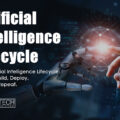1. Introduction: The New Era of Autonomous Back-Office Operations
The modern enterprise is undergoing a silent but powerful revolution in its back office. What was once a hub of repetitive administrative work is being reimagined through the lens of artificial intelligence. Tasks like purchase requisitions, invoice processing, payroll calculations, and contract reviews—traditionally handled by teams of employees—are now being delegated to intelligent AI agents. These systems operate round the clock, interpret data, learn from historical patterns, and perform actions that once required human discretion.
By automating workflows from procurement to payroll, AI doesn’t just save time—it changes the pace, quality, and consistency of operations. It transforms the back office from a support function into a strategic engine for enterprise agility.
2. Understanding the Scope: What Lies Between Procurement and Payroll
The phrase “procurement to payroll” may sound like a narrow pipeline, but it encapsulates a vast ecosystem of interdependent business functions. Between the sourcing of goods and the payment of salaries lies a matrix of operations including:
- Procurement & Vendor Management
- Invoice & Payment Processing
- Inventory & Supply Chain Coordination
- Contract Lifecycle Management
- HR Onboarding & Payroll Execution
- Compliance & Documentation
These tasks, though essential, are time-intensive and often suffer from inefficiencies when handled manually. They involve volumes of data entry, form filling, approvals, and record keeping. AI agents are now stepping in to execute these tasks with precision—reducing the administrative burden while increasing operational visibility and responsiveness.
3. The Rise of AI Agents in Enterprise Back-Office Functions
AI agents differ fundamentally from traditional software bots. They are designed not just to automate, but to interpret, decide, and act. By combining natural language processing, machine learning, and robotic process automation, these agents can understand unstructured data, recognize patterns, and make contextual decisions.
In the back office, this means AI can autonomously match invoices to purchase orders, flag contract anomalies, initiate payroll processes based on timesheet data, or trigger replenishment requests based on inventory forecasts. These agents don’t merely follow scripts—they adapt based on changing inputs and business rules, making them ideal for complex, data-heavy environments.
4. Procurement Automation: From Vendor Selection to Purchase Orders
Procurement teams are often burdened with the need to identify suppliers, request quotations, negotiate terms, and manage approvals—all while adhering to budget constraints and compliance requirements. AI streamlines this entire workflow. Using historical data, AI agents can suggest optimal suppliers, anticipate procurement needs based on consumption trends, and generate purchase orders without human involvement. Here are a few more examples of how AI can help with procurement:
- Vendor Comparison: AI agents scan databases, past contracts, and external sources to recommend optimal suppliers based on cost, compliance, and delivery performance.
- Demand Forecasting: Machine learning models analyze historical data to predict future procurement needs.
- PO Creation & Approval: AI agents auto-generate purchase orders and route them for approval based on pre-defined rules.
- Risk Detection: NLP-based bots scan vendor records for legal or financial red flags.
They can even monitor supplier performance, predict delays, and provide proactive recommendations to procurement managers. The result is a faster, smarter sourcing cycle that aligns purchasing decisions with business priorities.
5. Invoice Processing & Accounts Payable: Eliminating Manual Bottlenecks
Few back-office tasks are as ripe for automation as invoice processing. Matching an invoice with a corresponding purchase order and delivery note—known as three-way matching—is tedious and error-prone when done manually. AI agents equipped with optical character recognition and intelligent validation capabilities can read scanned invoices, extract relevant data, and perform automated matching in seconds. AI agents can now take over the task of:
- Invoice Extraction: Using OCR and NLP to read PDFs, emails, or scanned documents and extract key fields (amount, due date, line items).
- 3-Way Matching: Cross-verifying invoice data against purchase orders and delivery receipts with high accuracy.
- Exception Handling: Flagging discrepancies and routing them to the correct stakeholder for resolution.
- Automated Payments: Scheduling payments based on supplier terms and available cash flow.
In cases where discrepancies arise, the system can flag the issue and route it to the appropriate person for resolution. Payment scheduling, too, can be optimized based on vendor terms and cash flow, ensuring accuracy and timeliness while reducing manual intervention.
6. Inventory & Supply Chain Optimization with AI-Driven Insights
Managing inventory has always involved a delicate balance—having just enough stock to meet demand without overstocking and increasing carrying costs. AI brings intelligence to this balancing act. By analyzing sales patterns, seasonality, supplier reliability, and external factors like market demand or geopolitical risks, AI agents can generate highly accurate inventory forecasts. Here is a concise list of how AI agents can help with inventory and supply chain.
- Predictive Analytics: Forecasting inventory needs using seasonality, customer demand, and sales trends.
- Dynamic Reordering: Triggering procurement when stock falls below threshold, with built-in logic for buffer inventory.
- Supplier Lead Time Tracking: Monitoring delivery timelines and updating forecasts dynamically.
- Warehouse Optimization: Recommending storage patterns and pick-path efficiencies.
They can even trigger automated replenishment orders, optimize warehouse space allocation, and even simulate supply chain scenarios to identify vulnerabilities. This makes the supply chain more resilient, responsive, and cost-effective, all while reducing the need for hands-on oversight.
7. Contract Management: Smarter Compliance and Renewals

Contracts are foundational to operations across procurement, sales, and HR. Yet, managing them often involves scattered documents, missed renewals, and compliance risks. AI agents can read contracts using natural language processing, extract key clauses, and monitor important deadlines like renewal dates or penalty periods.
- Smart Document Parsing: Extracting key clauses like payment terms, SLAs, and renewal dates.
- Obligation Tracking: Monitoring contract milestones and ensuring compliance with obligations.
- Renewal Alerts: Triggering proactive renewals or renegotiations before expiry.
- Risk Mitigation: Highlighting non-standard terms or legal inconsistencies using trained language models.
More importantly, these agents can flag unusual terms, detect potential non-compliance issues, and suggest renegotiations where necessary. By centralizing and automating contract workflows, businesses not only ensure compliance but also gain better control over obligations and opportunities.
8. Employee Onboarding to Payroll: Automating the HR Back Office

HR teams juggle a wide range of back-office functions—collecting new hire documents, setting up payroll, managing benefits, and processing employee exits. These tasks, while repetitive, are crucial to employee satisfaction and legal compliance. AI helps streamline them by handling document verification, automating form submissions, and configuring employee records across multiple systems.
- Document Verification: Extracting and verifying IDs, resumes, tax forms, and bank details.
- Workflow Automation: Creating employee records, setting up system access, and assigning training modules.
- Attendance & Leave Tracking: Integrating with biometric or app-based systems to monitor employee time.
- Payroll Processing: Calculating gross and net pay, deductions, and generating payslips.
- Tax Filing & Compliance: Preparing statutory filings and ensuring timely submissions.
Once employees are onboarded, AI can track attendance, process leave requests, and calculate pay with tax and benefit deductions applied automatically. Payroll, often a source of errors and employee grievances, becomes more accurate and transparent. The entire employee lifecycle is managed more smoothly, enhancing both internal efficiency and the employee experience.
9. Case Study Spotlight: AI-Driven Transformation in Back-Office Workflows
Consider a mid-sized logistics firm that decided to modernize its back-office functions using AI agents. Previously, procurement cycles took over a week, invoice mismatches were common, and onboarding new hires took several days. After implementation, AI agents now generate purchase orders based on inventory thresholds, process over 95% of incoming invoices without human review, and onboard new employees within 24 hours.
- A procurement AI that reduced PO cycle time from 7 days to 1.
- Invoice processing bots that brought down AP errors by 90%.
- An HR onboarding agent that reduced new hire setup time from 5 days to 1.
Payroll errors dropped by 80%, and overall back-office processing time was cut in half. What was once a manual, error-prone operation has become a responsive, data-driven ecosystem. This case exemplifies how AI adoption, even in incremental steps, can deliver significant operational gains.
10. Key Benefits: Speed, Accuracy, and Cost Efficiency

The advantages of AI-driven automation are evident across all back-office domains. Tasks are completed in a fraction of the time, with far fewer errors and reduced reliance on manual labor. This leads to substantial cost savings—not just through headcount reduction, but also through fewer late payments, missed renewals, and compliance violations.
Additionally, AI enables real-time visibility into operations, allowing for faster decision-making and agility in responding to change. Ultimately, the back office becomes a competitive advantage rather than a drag on resources.
11. Challenges & Considerations: Implementation, Ethics, and Workforce Impact
Despite its promise, implementing AI in the back office is not without challenges. Data quality is critical—AI systems are only as effective as the data they are trained on. Integration with existing systems, many of which may be outdated or siloed, can also pose technical hurdles.
Moreover, ethical considerations around privacy and data handling must be addressed, especially when dealing with sensitive employee or financial information. Perhaps most importantly, organizations must manage the human impact—ensuring that employees understand the shift, are retrained where necessary, and view AI as a partner rather than a threat.
12. The Role of Human Oversight in an AI-Augmented Back Office
While AI agents are powerful, they are not infallible. They lack contextual understanding in nuanced situations, and their decisions, while data-driven, may miss the subtleties of human judgment. That’s why human oversight remains essential.
Employees play a critical role in defining business rules, handling exceptions, refining AI outputs, and ensuring ethical boundaries are respected. This partnership between human and machine—where AI handles volume and humans handle value—forms the cornerstone of a successful digital back office.
13. Future Outlook: Autonomous Enterprises and Self-Driving Operations
The trajectory of AI points toward even greater levels of autonomy. We’re moving toward organizations where back-office functions operate with minimal human input, guided by AI agents that continuously learn, adapt, and improve. These self-driving operations will dynamically adjust procurement strategies, predict workforce needs, and manage cash flows in real-time.
In this vision of the autonomous enterprise, decision-making becomes faster, errors become rarer, and administrative burden becomes almost nonexistent. Businesses that embrace this model will find themselves more agile, cost-effective, and competitive in the digital age.
14. Conclusion: From Reactive to Proactive – The Back Office Reinvented
AI is not just automating the back office—it is reinventing it. What was once reactive and transactional is becoming proactive and strategic. From procurement to payroll, AI agents are creating seamless, integrated workflows that operate with speed, accuracy, and intelligence.
This transformation doesn’t just improve processes; it empowers people, enabling them to focus on innovation and problem-solving rather than routine tasks. As businesses continue to navigate a complex and fast-moving world, those that invest in AI-driven back-office automation today will be the ones leading the future tomorrow.











